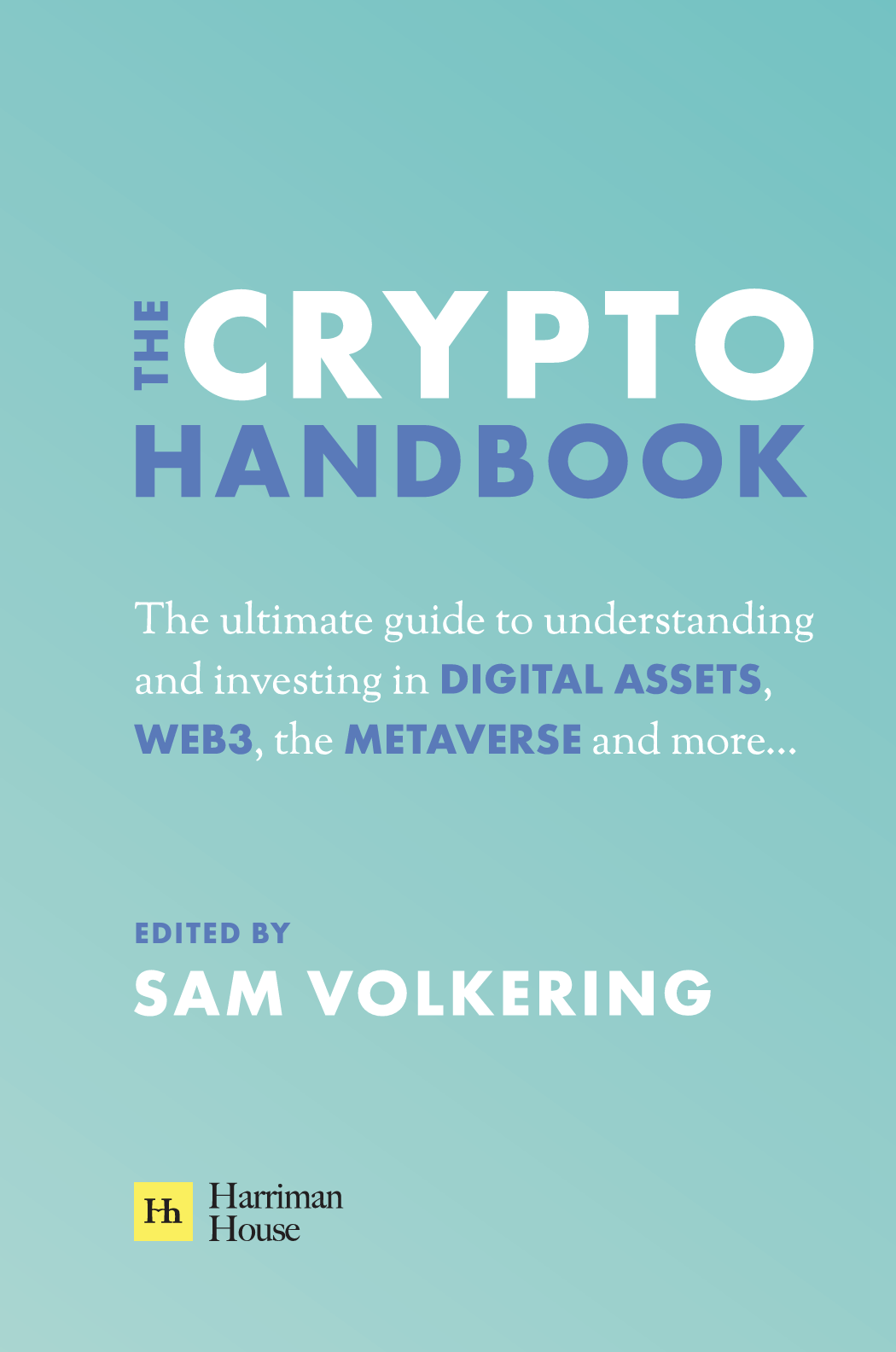Do you see Pepsi or Coke? Disrupting a $148 billion market without anything real
14th October 2021 |
Things are never as they might seem.
Let’s get a little “meta” for a moment…
In the present, our physical environment is our reality.
Walking the dog, driving a car, going for a beer, sitting reading a Frontier Tech Investor report, this is the present.
In this moment, what you see, is what you’re actually seeing.
But in the digital world, it’s a different story. In the digital world we can go beyond (the literal Greek meaning of “meta”) reality. We can go beyond the present.
What you see in the digital world doesn’t always conform to the reality that you know.
Take films, for example. In this digital age, what you think is real, is often no more than advanced visual and special effects (known as CGI), animations and product placements.
When you watch a movie like Avengers: Endgame it’s pretty clear that the Hulk is CGI. It’s also clear Benedict Cumberbatch isn’t really a sorcerer capable of manipulating time.
But when you’re seeing trees or buildings in the background, are they real? Or are they CGI too? When the grass blows in the wind, is it really blowing in the wind, or is it just CGI too?
Does it even really matter?
What about when Tony Stark (played by Robert Downey Jr.) drives away in an Audi R8 e-tron? Is the car really there? What about when the Audi Q7s are totaled by Black Panther and they crash, flip and explode? Real or fake?
Or… who cares?
Well CGI for effects is one thing. But what about CGI for brand placement? It’s quite clear Marvel’s Avengers had a thing for Audis.
It’s also true the James Bond movie franchise has a thing for Aston Martins. But did you also know that Heineken paid a reported £28 million to be in Skyfall? And did you know that, for the latest Bond film, No Time to Die, around £75 million has been spent by brands to sneakily find their way into the film and in front of your eyes?
Product placement is big business in film and TV and more recently video games. According to Statista, in 2019 around $11.4 billion was spent on product placement, up from $4.75 billion in 2012.
Daniel Craig holding a Heineken or driving an Aston Martin is one thing… but what if the future of how and what we see on our screens, in our games, everywhere we look in the digital world, is littered with product placement so real, but yet so fake, that we are simply unable to tell?
What if when you step into a virtual world you look up at a billboard and see an ad for Pepsi… but when your friend steps into the exact same world in the exact same place and looks at the exact same billboard at the exact same time, they see an ad for Coke?
As we say, in our digital world, things are never as they might seem.
Disrupting a $145 billion market
Product placement and advertising is big business across a number of digital platforms.
Currently, the global advertising market on video and TV spending is worth $145 billion.
From music videos, to films and even influencer marketing, media has been an astute way for companies to advertise their products to global audiences.
Traditionally, in digital content, it has only been possible (up until now) for advertisement to be included at the time of filming, like the Heineken in Bond’s hand.
However, thanks to advancements in technology, this is no longer a prerequisite.
Our latest Frontier Tech Investor recommendation is disrupting the old, rigid nature of in-content advertising and product placement.
It has developed a solution which allows an advertisement to be inserted into content after that content has been created, giving companies flexibility to promote their brand that is not restricted to only the original footage.
The beauty with this is that it creates ample opportunity for multiple brands to access content. Furthermore, any blank space, any object in a piece of content, can now be monetised and brands can reach new audiences.
This kind of subtle advertising is important to a world where we will live more online, in digital worlds and consume more personalised content than ever before. A study by Statista found that 49% of Americans took action after seeing product placement in media.
Meanwhile, a study by Kantar found that 70% of people globally find traditional adverts “annoying”. In addition, around 61% of people globally skip adverts.
As such, expensive advertising campaigns aren’t always getting across to consumers in the desired way.
In a streaming world, the idea of cutting out traditional ads and leaning more into virtual product placement looks to be a win-win situation for producers of the content, for advertisers and for consumers.
Introducing your new Frontier Tech Investor recommendation…
Mirriad Advertising (LSE: MIRI) is your latest Frontier Tech Investor recommendation. Mirriad is a video technology company that dynamically inserts advertising into content after the content has been produced.
It is an AIM-listed company on the London Stock Exchange, has a market cap of £76.77 million and a current share price of 27.5GBp.
Mirriad is based in London, UK.
The company was founded in 2008.
Mirriad’s technology solution uses artificial intelligence (AI) technology to insert advertisements into content after it has been produced.
The technology uses machine learning algorithms to determine the best point at which to insert the advertisement. It might be something as innocuous as people seated around an empty boardroom table when the content is created. But using Mirriad’s tech, in post-production a branded coffee company could have its branded cups and products added on to the table.
What you see is a bunch of people sat around a table filled with coffees and takeaway bags from the brand. But in fact, everything on that table isn’t real.
Things are never as they seem…
A great video on how exactly this tech can work can be seen in a video from the BBC’s Click programme, which looks at how Mirriad’s tech works. You can view it (and we strongly suggest you do) here.
Of course, this post-production brand and product placement has to look as realistic as possible. Mirriad’s algorithm ensures this authenticity by detecting objects, emotions and colours. It has been specially programmed with around half a million minutes of content from Mirriad’s partners.
What makes us excited about Mirriad’s tech isn’t just what it can do now, but what it could lead to in the future.
In a piece in the New York Times on product placement and brands, which specifically looked at Mirriad, the writer suggested that:
Streaming services could also drop in brand-name products based on when a show is being watched. Someone who watches a streaming show in the morning could see a carton of orange juice within a character’s reach, while a different viewer watching the same thing in the afternoon could see a can of soda.
We see this idea of personalised advertising and product placement as the future for brands to reach audiences. In the same New York Times article, Stephan Beringer, CEO of Mirriad said,
“Viewers have been educated to look away from advertising, […] But we’re putting something in that contextually makes sense. If you do it well, and it’s not annoying, it can work.”
What’s crucial is that Mirriad’s unique technology is protected by no less than 28 patents in jurisdictions all over the world.
Collectively, the patents protect each aspect of Mirriad’s technology, including detecting insertion zones, machine learning techniques and embedding.
The intellectual property is therefore secure, thereby giving Mirriad a stronghold in an area of advertising and brand placement – and one which is fast growing.
We believe that this is the direction in which the entire advertising industry is heading.
Currently, Mirriad’s customer base spans across Europe and Asia.
In Europe, its markets are predominantly in Germany, France and the UK.
In Asia, where it has a stronger foothold, its main market is China.
Of note, it has a two-year commercial partnership with ecommerce technology giant Tencent. Tencent is a giant tech conglomerate, but also the largest video game publisher globally, one of the largest social media companies and one of the biggest tech investors in the world.
However, Mirriad is now looking to infiltrate the largest and most valuable advertising market in the world: the United States.
According to CEO Stephan Beringer, the company has a strong roster of US partners, in which it is looking to commercialise its solution. One of these is a “household” food and drink business in the United States.
Fresh expansion into the US market offers huge potential, and is part of why we are recommending the stock right now.
In addition, Mirriad is already seeking to take its proprietary technology to the next level.
Specifically, it wants to sell in-content advertising campaigns automatically.
In other words, that means feeding the ads into huge search engines such as Google, where buying the ads is a one-click experience.
As such, this could open up Mirriad to a sizeable chunk of the digital marketplace and make its product more accessible than ever before.
Financials, risks and action to take
So, how does Mirriad make money?
Well, it takes a share of the revenue generated by its customers for each campaign that it sells to an advertiser or media agency. Usually, it takes between a 20% to 35% cut of the campaign sale.
So, for example, Channel 4, who Mirriad has worked with before, may want to sell an advertising campaign that uses Mirriad’s technology. A brand, such as Deliveroo (another Mirriad has worked with), then buys the campaign, thereby giving Mirriad a cut.
It also works on a fixed-fee basis, where Mirriad charges a fixed-fee for the volume of advertising created for each of its customer’s campaigns.
For the full year ended 31 December 2020 Mirriad’s revenues totalled £2.18 million. This is almost double its revenue for the same period in the previous year, which was £1.14 million.
Gross profits more than doubled, going from £961,447 in the year ended 31 December 2019, to almost £1.94 million for the same period in the following year.
Operating losses for the year ended 31 December 2020 were also roughly a 25% improvement on the same period in the previous year.
For a company who finds itself at a nascent stage in its industry, this is hugely impressive. It’s already demonstrating its capability to turnover a profit, and at the same time, reduce losses.
Its most recent revenue figures are impressive too. In the half year ended 30 June 2021, revenues rose 27% from the same period in the previous year.
We expect these impressive revenue figures to rise, in line with its growing presence in the United States.
There are already signs of this materialising.
For instance, US revenues were up 333% in the half year ended 30 June 2021, compared to the same period in the previous year.
So, it’s still very early days for Mirriad in the biggest advertising market in the world.
What really matters is that Mirriad has identified a total addressable market of $145 billion, namely global advertising spent on TV and video. If Mirriad captured just 0.5% of that market opportunity, it would see the company with $180 million (£132.3 million) in potential revenues.
That would be almost a 60-times increase in revenues compared to those of its full year 2020.
That said, it’s important to consider the risks that Mirriad currently faces.
The company hit its highest ever share price of 65GBp in April 2021. Of course, this was at a time when people were in the depths of lockdown, and where streaming services experienced a boom.
However, since then, its share price has more than halved to around 28GBp at the time of writing.
We attribute part of this dip to a considerable amount of profit-taking by investors, after a whirlwind period that saw it achieve just under a 600% gain in the year leading up to that April 2021 high.
But we also do put a lot of it down to the fact that “lockdown stocks” such as streaming services and companies whose focus is on those areas, have taken a hit in the last six months.
The real question is whether the stock can return to those levels… or is it heading lower still?
Considering the increasing shift to streaming services, content on demand, the expansion of virtual worlds, and gaming, we think Mirriad is in a perfect sweet spot for future advertising revenues to flow its way.
The technology is sound. Mirriad clearly has a roadmap to growth. While the company isn’t yet profitable, we expect that this will change with a successful move into the United States.
Another risk to consider is that Mirriad’s growing presence in the United States will likely incur significant R&D costs, according to Beringer.
This may deter investors because of the risk associated with a relatively unproven company such as Mirriad – especially if it can’t turn it into long-term profit.
Also, the advertising industry in which Mirriad operates is becoming increasingly crowded. Its main competitors, such as the Pebble Group and M&C Saatchi are bigger – and more established – players in the space.
As a consequence, Mirriad may struggle to gain significant market share if it can’t successfully compete with these bigger players. However, patent protection and proven technology does help to mitigate these risks.
Finally, most of Mirriad’s customers operate overseas. As such, any foreign currency arbitrages resulting from volatility in exchange rates may impact Mirriad’s profitability.
Nevertheless, we view Mirriad as an exciting, innovative company and a perfect addition to our buy list.
Buying instructions
Mirriad Advertising (LSE: MIRI) is an AIM-listed company on the London Stock Exchange. It has a market capitalisation of £76.77 million and a current share price of 27.5GBp.
The average volume in the stock is around 251,000 per day. That works out to around £69,000 per day in value traded.
We’d classify this as an illiquid stock, meaning that on recommendation, the price may spike higher.
That’s why it’s important to stick to within our buy limits. Should the stock trade over our buy limit, it moves to a hold. If you miss the boat, you should wait until trading activity dies down and price moves back below our buy limit before entering a position.
Action to take: BUY Mirriad Advertising (LSE: MIRI), current price 27.5GBp, buy up to 36GBp. We recommend setting a stop limit 40% below your entry price.
Name: Mirriad Advertising PLC
Ticker: MIRI.L
Price as of 14/10/2021: 27.5GBp
Market cap: £76.77 million
52-week high/low: 65GBp/25GBp
Buy up to: 36GBp
 Source: Koyfin
Source: Koyfin
Sam Volkering
Editor, Frontier Tech Investor
Elliott Playle
Junior Analyst, Frontier Tech Investor




